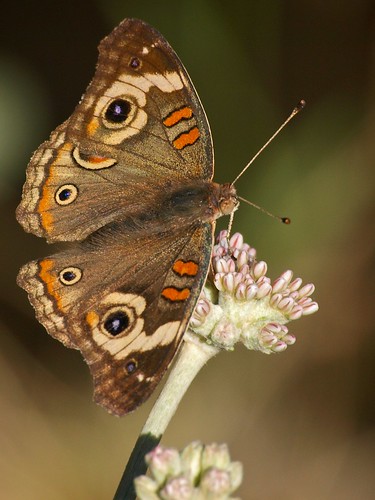I don’t usually ignore visual anomalies. They bring me to interesting things.
On this Berkeley day, something seemed out of place — that nagging oddity in my periphery. I turned and looked closer in the mud. Sure enough, there was an unusual outline in the creek bed.

Frog in Mud – ©ingridtaylar
As quickly as I noticed the frog, it dove into the mud. There is a frog in the photo below, concealed in the sludge:

Hidden Frog – ©ingridtaylar
I found a place to sit, behind some flowering Yarrow. After a few minutes, the frog peered out of its bath of mud. It was an American Bullfrog with its citrine eyes and green mug:
I posted the above image on Flickr and referred to the bullfrog as a “he,” offering the following distinction:
On female bullfrogs the tympanum (eardrum) is the same size or smaller than the eye socket. Male bullfrog tympanums are much larger filling most of the distance to their eyes.
So, this beautiful “she” watched me for a while. When I’d move my lens, her eyes followed. I set my camera down and just enjoyed the simplicity of the moment.
A few bullfrog factoids:
- They can jump up to six feet, sometimes exercising this prerogative in the quest of prey
- They hibernate until late spring or early summer — in the mud
- They’re an introduced species on the west coast, brought here as a food source in the late 19th century after market hunters decimated other frog species
- They’re nocturnal and aquatic — and they can breathe under water by absorbing oxygen through their skin
My head was, literally, framed by nectar plants, so honeybees and bumblebees scraped my cheek and hair.

Pink Clarkia (pink Clarkia (Clarkia arcuata I Think) With Honeybee – ©ingridtaylar
This Buckeye Butterfly tolerated me for a few captures:

Damselfly – ©ingridtaylar
And then, perhaps satisfied that I was no threat — or maybe not thinking of me at all — the bullfrog emerged in full.
I left her alone to enjoy the last of the day’s solar heat.
More info on American Bullfrogs: californiaherps.com.
And check out EcoSnake for some insights and information on the world’s reptiles and amphibians.




Leave A Comment